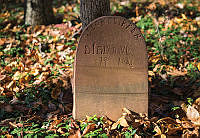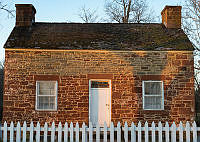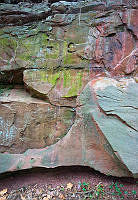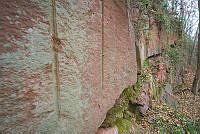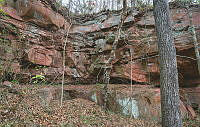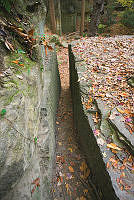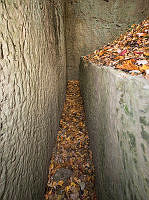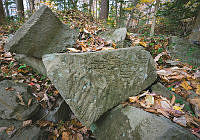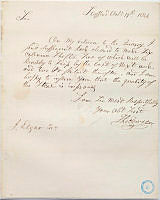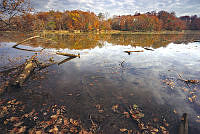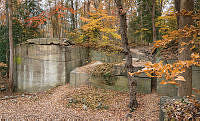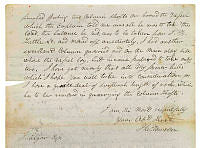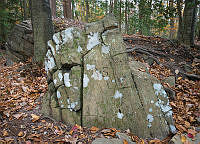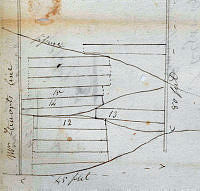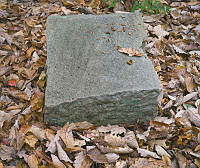Robert Steuart Boundary Marker, Government Island
This photograph was taken on Government Island in Stafford, Virginia. The federal government acquired all but one acre of the island, then known as Wiggington's Island, in 1791. The island served as a quarry for the freestone that was used to build the President's House and the United States Capitol Building. Extensive amounts of freestone were extracted from 1791 to the 1820s. In this photograph, the mark of stonemason Robert Steuart of Baltimore, Maryland, who purchased the remaining one acre in 1786, is seen on this boundary marker with the initials, "R.S."
